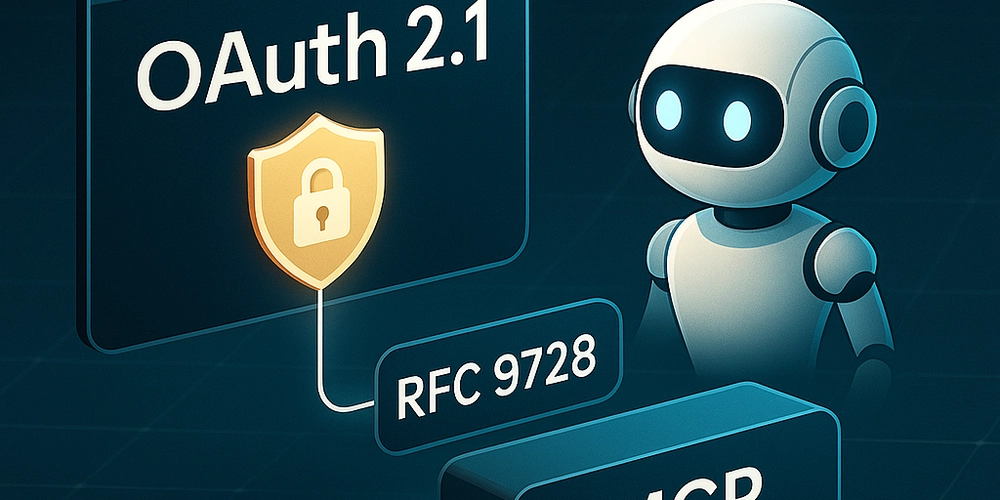AI‑Powered Security Transformation with Tactical Approach to Integration
In the evolving landscape of cybersecurity, artificial intelligence has transitioned from an experimental technology to a core component of security operations. According to recent Gartner research, security and risk management leaders are pivoting toward a more tactical approach to AI integration, focusing on specific, achievable objectives rather than pursuing broad, transformative implementations. This shift represents […] The post AI‑Powered Security Transformation with Tactical Approach to Integration appeared first on Cyber Security News.

In the evolving landscape of cybersecurity, artificial intelligence has transitioned from an experimental technology to a core component of security operations.
According to recent Gartner research, security and risk management leaders are pivoting toward a more tactical approach to AI integration, focusing on specific, achievable objectives rather than pursuing broad, transformative implementations.
This shift represents a maturation in how organizations leverage AI technologies to address security challenges while maintaining operational efficiency.
The tactical approach to AI integration emphasizes incremental improvements in security posture through targeted applications.
Rather than implementing sweeping AI solutions across security operations, organizations are identifying high-value use cases where AI can deliver immediate benefits without disrupting existing workflows.
This pragmatic strategy helps security teams realize tangible outcomes while minimizing implementation risks.
Rapid7 analysts noted that this tactical implementation has become essential as cybersecurity teams face mounting pressure to demonstrate concrete returns on technology investments.
Their observations reveal that organizations achieving the greatest success with AI-powered security are those prioritizing specific pain points rather than attempting comprehensive transformations.
The impact of this tactical approach extends beyond technological implementation to encompass organizational resilience.
Gartner’s research indicates that security leaders are increasingly recognizing that zero-tolerance for failure mindsets are unsustainable, leading to team burnout without proportional risk reduction.
Instead, the focus has shifted toward building resilience-in infrastructure, people, processes, and culture.
From a technical perspective, the implementation of AI-powered security requires careful consideration of integration points within existing security architectures.
Security teams must identify key processes where AI augmentation delivers the greatest value, such as incident triage, threat analysis, and documentation assistance.
Tactical AI Integration Frameworks
The tactical framework for AI integration prioritizes use cases based on potential security impact and implementation complexity.
Security teams typically begin with semi-automated workflows where AI assists human analysts rather than replacing them entirely.
This hybrid approach maintains human oversight while leveraging AI’s pattern recognition capabilities to increase efficiency and reduce analyst fatigue.
For instance, in threat detection scenarios, AI models can be trained to identify anomalous behaviors that might indicate compromise.
The implementation requires integration with existing SIEM platforms through APIs that enable bidirectional data flow while maintaining proper authentication and access controls.
# Example integration code for AI-assisted alert triage
def ai_triage_alerts(alert_data):
# Preprocess alert data for AI model
processed_data = preprocess_alerts(alert_data)
# Get AI risk assessment
risk_scores = ai_model.predict(processed_data)
# Prioritize based on risk score and return enriched alerts
return prioritize_alerts(alert_data, risk_scores)By focusing on specific integration points rather than wholesale transformation, organizations can effectively measure outcomes and iteratively improve their AI implementation strategies.
This measured approach allows security teams to build confidence in AI capabilities while maintaining necessary control over critical security functions.
Are you from the SOC and DFIR Teams? – Analyse Malware Incidents & get live Access with ANY.RUN -> Start Now for Free.
The post AI‑Powered Security Transformation with Tactical Approach to Integration appeared first on Cyber Security News.







































































































































































![[The AI Show Episode 145]: OpenAI Releases o3 and o4-mini, AI Is Causing “Quiet Layoffs,” Executive Order on Youth AI Education & GPT-4o’s Controversial Update](https://www.marketingaiinstitute.com/hubfs/ep%20145%20cover.png)

































































































































![From Art School Drop-out to Microsoft Engineer with Shashi Lo [Podcast #170]](https://cdn.hashnode.com/res/hashnode/image/upload/v1746203291209/439bf16b-c820-4fe8-b69e-94d80533b2df.png?#)








































































































(1).jpg?#)






























_Inge_Johnsson-Alamy.jpg?width=1280&auto=webp&quality=80&disable=upscale#)












































































































![Apple Developing AI 'Vibe-Coding' Assistant for Xcode With Anthropic [Report]](https://www.iclarified.com/images/news/97200/97200/97200-640.jpg)
![Apple's New Ads Spotlight Apple Watch for Kids [Video]](https://www.iclarified.com/images/news/97197/97197/97197-640.jpg)








































































![[Weekly funding roundup April 26-May 2] VC inflow continues to remain downcast](https://images.yourstory.com/cs/2/220356402d6d11e9aa979329348d4c3e/WeeklyFundingRoundupNewLogo1-1739546168054.jpg)



























